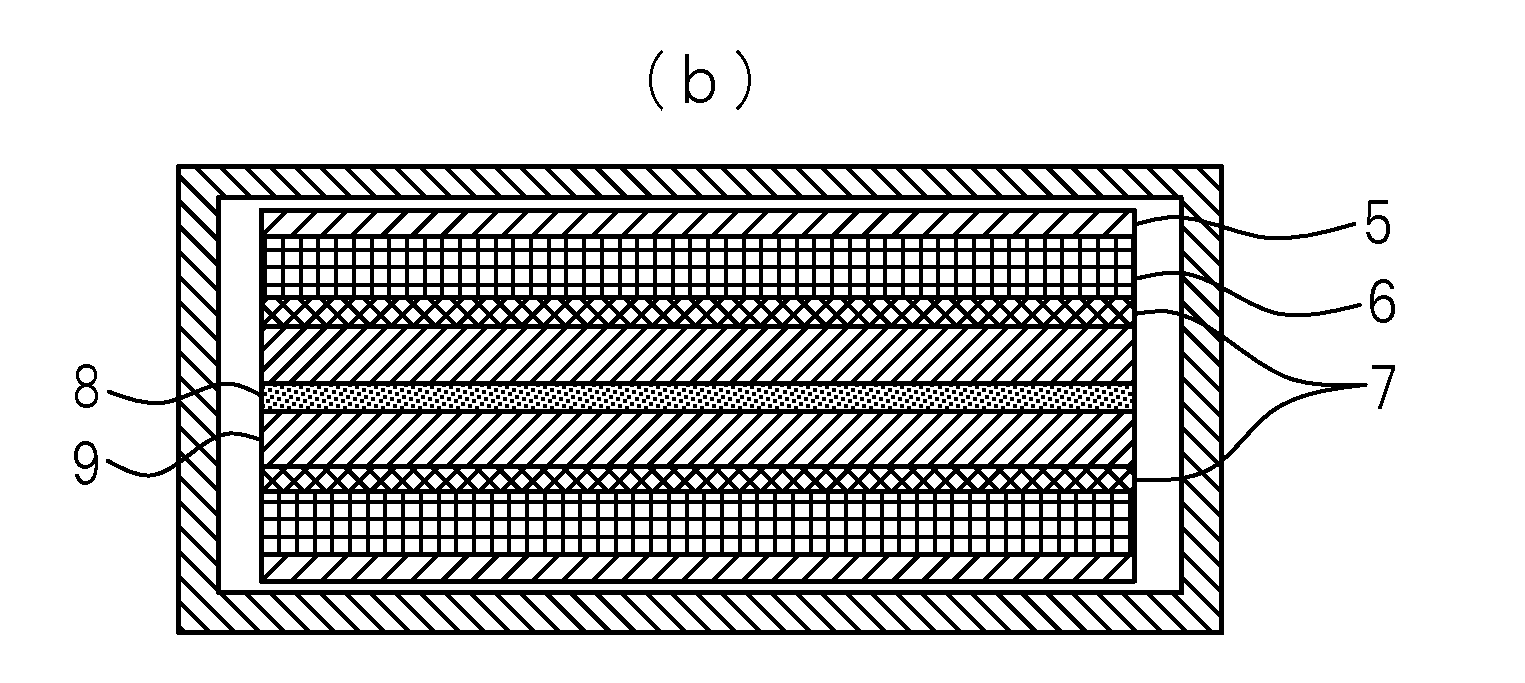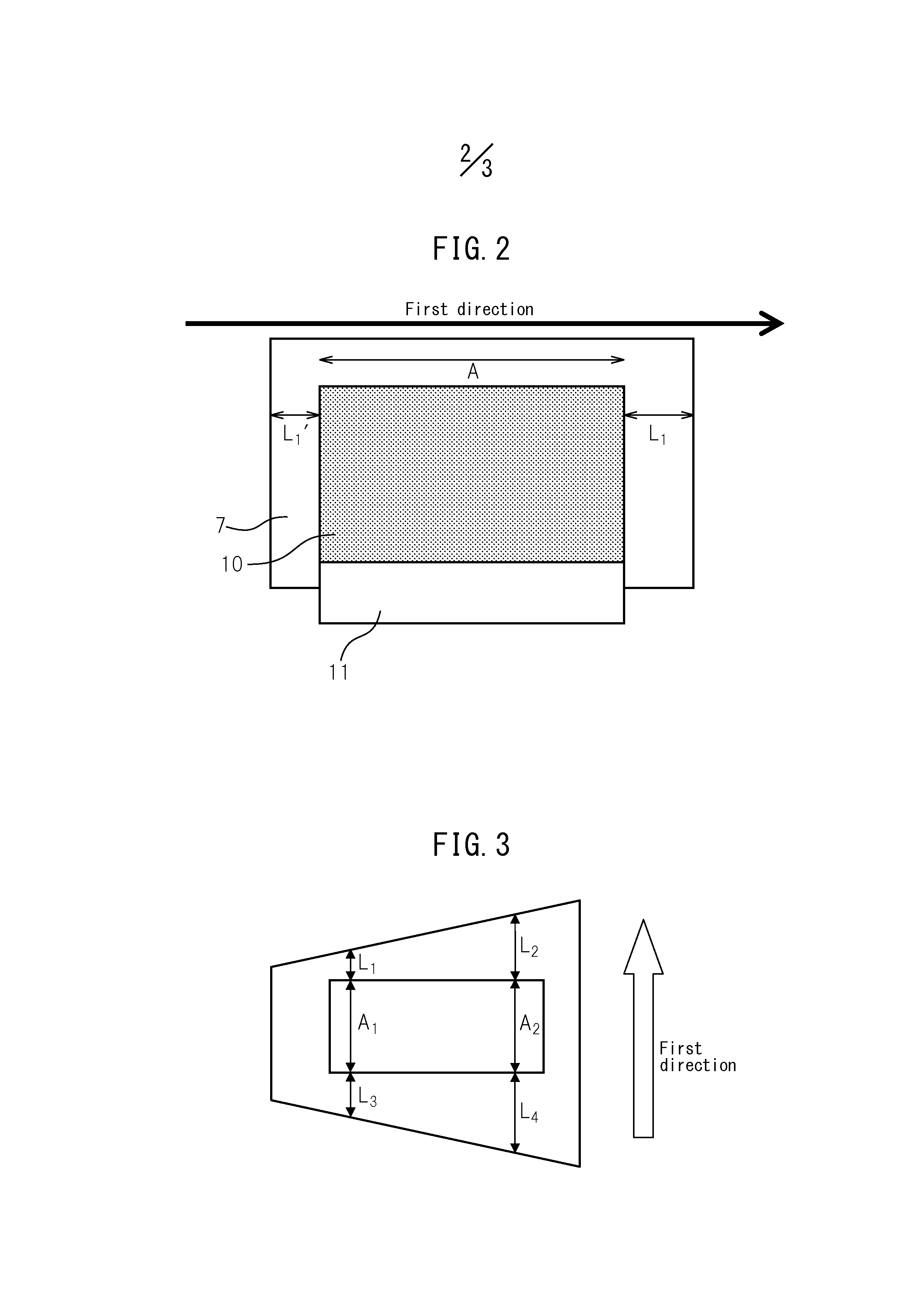Nonaqueous Lithium Storage Element
- Summary
- Abstract
- Description
- Claims
- Application Information
AI Technical Summary
Benefits of technology
Problems solved by technology
Method used
Image
Examples
examples
[0220]Examples and Comparative Examples will be shown below to further clarify characteristics of the present invention, however, the present invention should not be limited to the Examples.
example 1
Preparation of Negative Electrode
[0221]Fine pore distribution of a commercial palm-shell activated carbon was measured using nitrogen as an adsorbent, and using a micropore distribution measurement apparatus (AUTOSORB-1 AS-1-MP), manufactured by Yuasa Ionics Co., Ltd. Specific surface area was determined by a BET one point method. In addition, as described above, using the desorption isotherm, the mesopore volume and the micropore volume were determined by the BJH method and the MP method, respectively. As a result, the BET specific surface area was 1,780 m2 / g, the mesopore volume (V1) was 0.198 cc / g, the micropore volume (V2) was 0.695 cc / g, V1 / V2=0.29, and the average fine pore size was 21.2 Å.
[0222]150 g of the activated carbon was put in a cage made of a stainless steel mesh, the cage was placed in a stainless steel vat containing 75 g of coal-based pitch (softening point: 80° C.), and the cage and vat were then placed inside an electric furnace (effective dimension inside the f...
example 2
Preparation of Negative Electrode
[0232]A slurry was obtained by mixing 83.4 parts by weight of the composite porous material “1” obtained in Example 1, 8.3 parts by weight of acetylene black, and 8.3 parts by weight of PVDF (polyfluorovinilidene), with NMP (N-methylpyrrolidone). Next, the obtained slurry was coated onto one surface of a copper foil having a thickness of 15 μm, dried and pressed to obtain a negative electrode having the thickness of the negative active material layer of 35 μm.
[0233]The negative electrode obtained as described above was pre-doped with lithium ions in a total amount of 1310 mAh / g based on the weight of the composite porous material “1”, in a similar step as in Example 1, to prepare a negative electrode of Example 2.
(Preparation of Positive Electrode)
[0234]It was prepared similarly as in Example 1.
(Assembly and Performance Evaluation of Electrical storage element)
[0235]The storage element was prepared similarly as in Example 1.
[0236]The storage element ...
PUM
 Login to View More
Login to View More Abstract
Description
Claims
Application Information
 Login to View More
Login to View More - R&D
- Intellectual Property
- Life Sciences
- Materials
- Tech Scout
- Unparalleled Data Quality
- Higher Quality Content
- 60% Fewer Hallucinations
Browse by: Latest US Patents, China's latest patents, Technical Efficacy Thesaurus, Application Domain, Technology Topic, Popular Technical Reports.
© 2025 PatSnap. All rights reserved.Legal|Privacy policy|Modern Slavery Act Transparency Statement|Sitemap|About US| Contact US: help@patsnap.com



